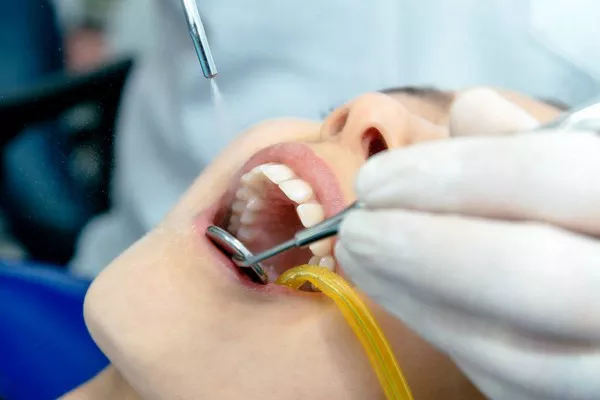Periodontal disease, commonly known as gum disease, is a prevalent dental condition that affects the health of the gums and supporting structures of the teeth. It encompasses a range of conditions, from mild gingivitis to severe periodontitis. Left untreated, gum disease can lead to tooth loss and impact overall health. Fortunately, various treatment options are available to manage and control periodontal disease. In this comprehensive guide, we will explore the best treatment approaches, their stages, and the importance of early intervention in preserving oral health.
Understanding Periodontal Disease
Periodontal disease is primarily caused by the accumulation of bacterial plaque on teeth and gums. The bacteria in plaque release toxins that irritate the gums, leading to inflammation. If left untreated, this inflammation can progress and damage the tissues that support teeth, including the gums, ligaments, and jawbone. Periodontal disease can manifest in several forms:
Gingivitis: The earliest stage of gum disease, characterized by redness, swelling, and bleeding of the gums, particularly during brushing or flossing. Gingivitis is usually reversible with proper oral care and professional cleaning.
Chronic Periodontitis: This is the most common form of periodontal disease. It involves the formation of pockets between the teeth and gums, bone loss, and, if untreated, tooth mobility and loss.
Aggressive Periodontitis: This form of gum disease progresses rapidly and is more common in younger individuals. It can lead to severe bone loss and tooth loss if not addressed promptly.
Periodontal Abscess: A painful collection of pus within the gums or tooth-supporting tissues, often requiring immediate treatment.
The Best Treatment for Periodontal Disease
The best treatment for periodontal disease depends on its severity. Early intervention is crucial to prevent the progression of the disease. Here are the primary treatment approaches:
Non-Surgical Periodontal Therapy:
a. Scaling and Root Planing (SRP): This is a non-surgical procedure performed by a dental hygienist or periodontist. It involves the removal of plaque and tartar (calculus) from the tooth surfaces and root surfaces below the gumline. Root planing smoothens the root surfaces to discourage bacterial attachment. Local anesthesia may be used for comfort.
b. Antibiotics: In some cases, antibiotics, such as doxycycline or amoxicillin, may be prescribed to help control bacterial infection.
c. Oral Hygiene Education: Patients are educated on proper oral hygiene practices, including effective brushing and flossing techniques. Regular dental check-ups and cleanings are emphasized.
Surgical Periodontal Therapy:
a. Pocket Reduction Surgery: In cases of advanced periodontitis with deep pockets between the teeth and gums, surgical intervention may be necessary. This procedure involves lifting the gum tissue, removing bacteria, and reducing pocket depth. Sometimes, bone grafts or tissue regeneration procedures are performed simultaneously.
b. Gingival Flap Surgery: In this procedure, the gums are lifted back to allow access for deep cleaning and removal of infected tissue. Once cleaned, the gums are repositioned and sutured in place.
c. Soft Tissue Grafts: For cases where gum recession has occurred, soft tissue grafts may be used to replace lost gum tissue and improve aesthetics.
Maintenance and Ongoing Care:
a. Regular Check-ups: Patients with a history of periodontal disease require more frequent dental check-ups and cleanings to monitor the condition and prevent recurrence.
b. Home Care: Consistent and effective oral hygiene practices at home, including daily brushing and flossing, are essential to maintain periodontal health.
c. Lifestyle Factors: Lifestyle factors such as smoking and poor nutrition can impact periodontal health. Quitting smoking and adopting a balanced diet can support gum health.
The Importance of Early Intervention
Early intervention is critical in managing periodontal disease. Gingivitis, the earliest stage, can often be reversed with proper oral hygiene and professional cleaning. However, if left untreated, it can progress to more severe forms of gum disease, requiring more extensive and costly treatments.
Advanced periodontitis can lead to tooth mobility and loss, impacting a person’s ability to eat, speak, and smile confidently. Moreover, emerging research suggests a link between periodontal disease and systemic health issues, such as heart disease and diabetes, making it even more crucial to address gum disease promptly.
Conclusion
Periodontal disease is a common dental condition that can have serious consequences if left untreated. The best treatment approach for periodontal disease depends on its severity, with non-surgical therapies like scaling and root planing being the initial step. For more advanced cases, surgical procedures may be necessary to control the disease and restore gum health.
Regardless of the stage of gum disease, ongoing care, including regular dental check-ups and a commitment to excellent oral hygiene, is essential to maintain periodontal health. Early intervention and preventive measures can help individuals preserve their oral health, prevent tooth loss, and reduce the risk of systemic health complications associated with periodontal disease. Consulting with a qualified dentist or periodontist is crucial to developing a personalized treatment plan for managing and controlling gum disease.
Related Topics:




























